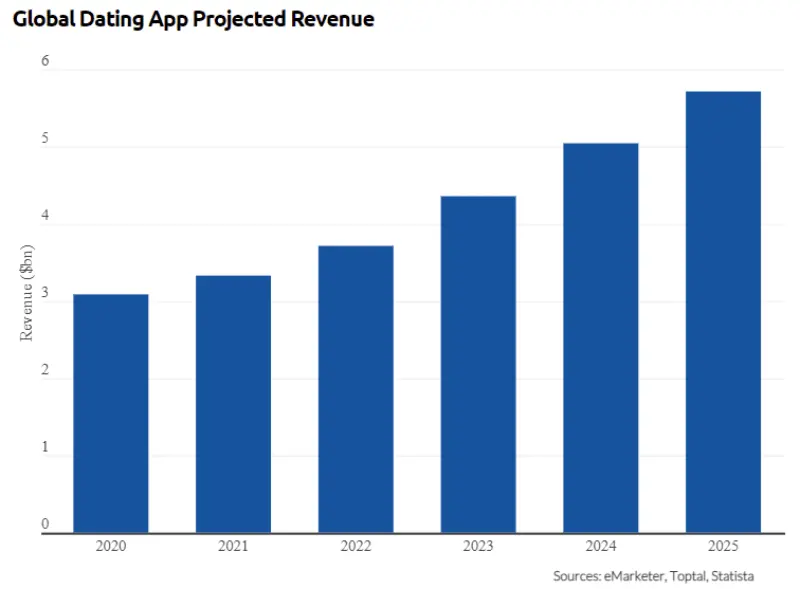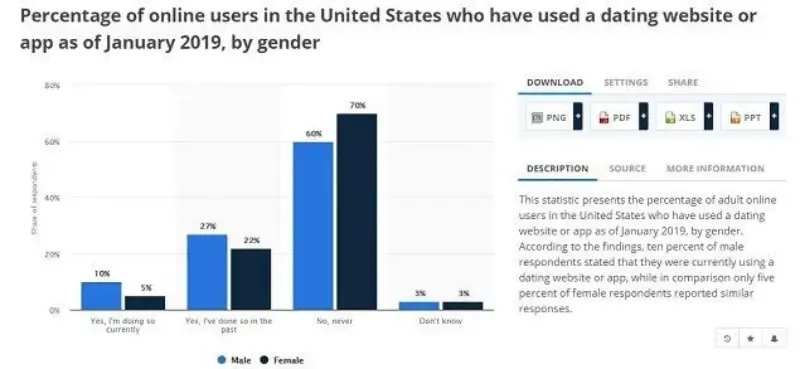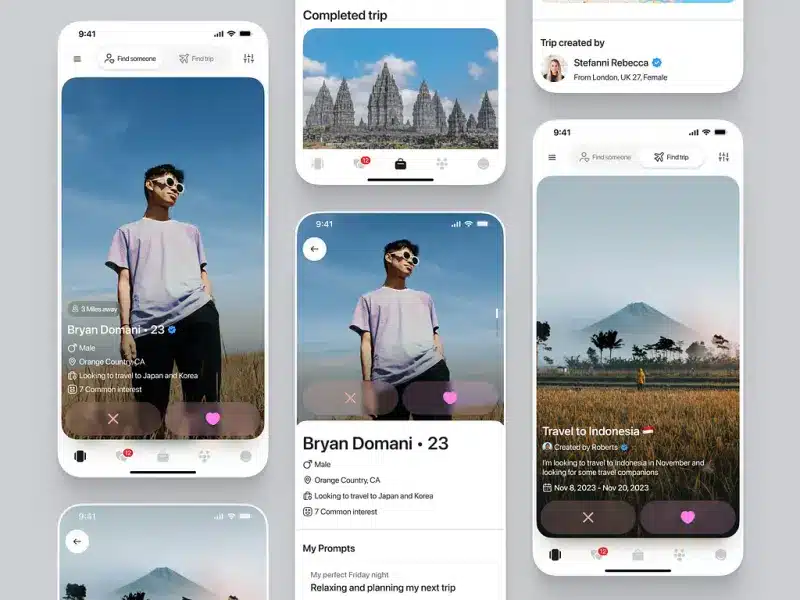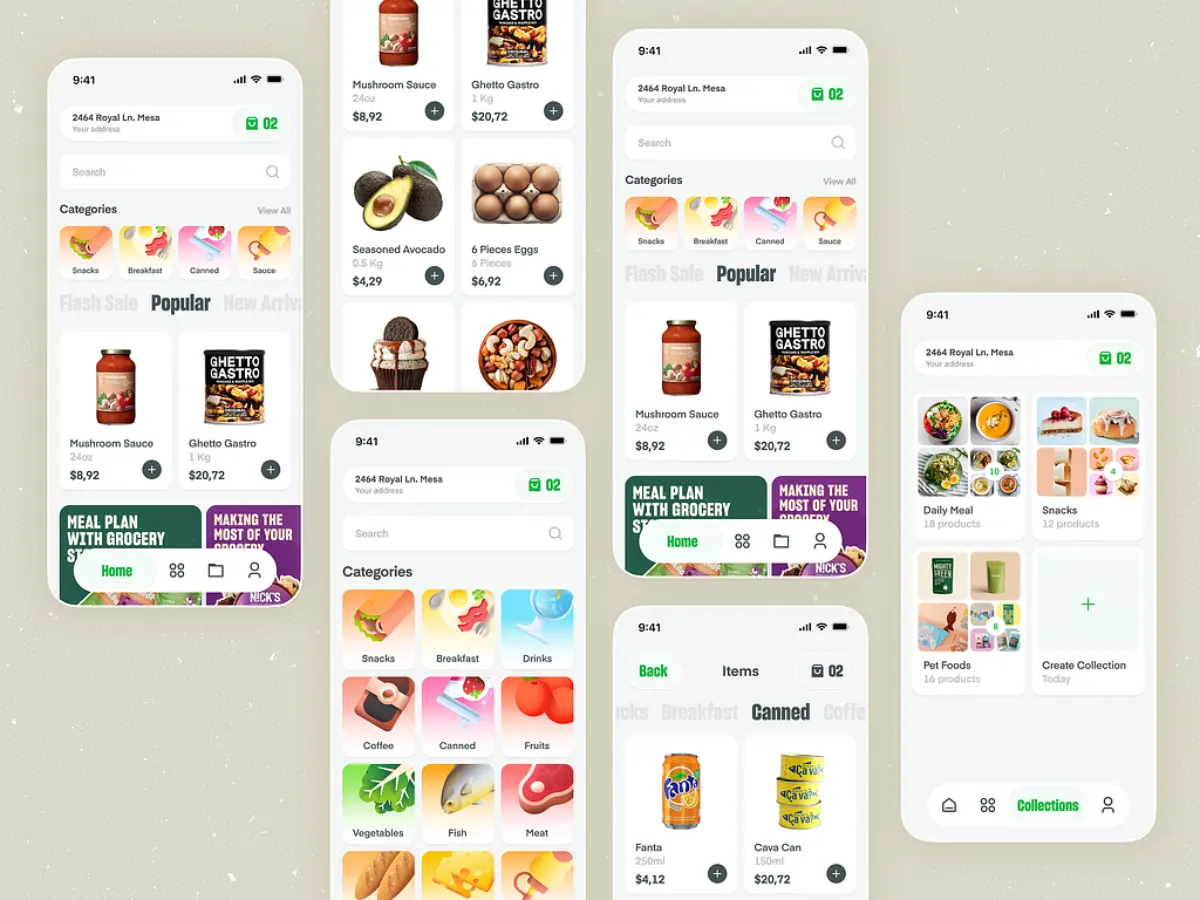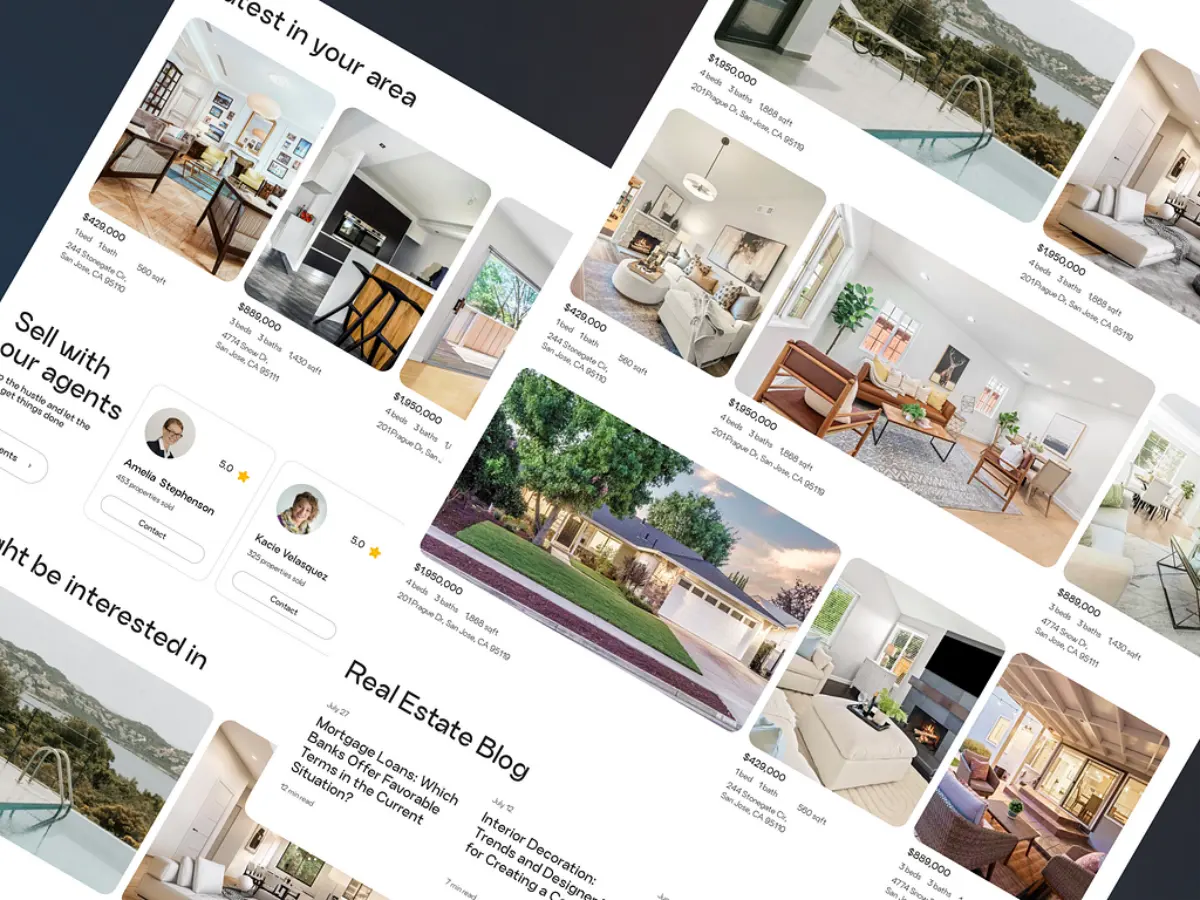The Most Complete Guide on How to Create A Dating App
- TECHVIFY Team
- 0 Comments
With much of our communication happening online, it’s no surprise that the dating world has also shifted in the same direction. In 2021, 49 million people in the U.S. alone turned to online dating services—whether to find a serious partner or just enjoy a fun date. The trend became even more pronounced in 2020, as men and women increasingly embraced online dating during pandemic lockdowns and social distancing measures.
Additionally, almost half of men and women report that they struggle to approach people. With this in mind, it’s no surprise that dating apps have skyrocketed in popularity, revolutionizing how we build romantic connections.
Given this trend, now is the perfect time to create a dating app that adds value for both businesses and users. So, let’s dive into what you need to consider before starting your dating app development journey.
I. The Modern Trend in Shifting to Dating Apps
In the early days, people looking for love had to rely on mail-order bride services. Then, in the 1990s, dating websites became the go-to. Nowadays, with so much of our time spent on our phones, dating apps have become more in demand than ever. These apps offer users an easy way to find each other, chat, and—if both are interested—take things to the next step with a date.
Apps like Tinder, Bumble, and Plenty of Fish let people browse photos, send messages, and even make video calls. On top of that, gamification features make the whole process of searching for love more fun and less stressful. It’s no surprise that these apps have seen such huge success.
Dating app revenue statistic
But what exactly makes online dating so appealing? Below, we’ve highlighted some key features that attract users from all over the world to download and use these apps. Here’s a quick look:
- A diverse range of users
- Effortless connection-building
- Perfect for busy lifestyles
- Available anytime, anywhere
- Control over unwanted interactions
- Ability to search by location
If you’re still on the fence about developing a dating app, let’s dive into the numbers. The global dating app market is expected to grow steadily in the coming years.
By 2025, this industry is projected to reach $5.71 billion, with more users from North America and Europe signing up every day.
Hopefully, this gives you a bit more confidence to explore building a mobile solution in this space. Now, let’s dig deeper into the different types of dating apps currently available on the market.
II. Different Types of Dating Apps
There are four main types of dating apps, based on how they match people. Most modern dating apps combine several of these types to offer a well-rounded user experience. Let’s take a look:
-
Geolocation-Based Apps
As the name suggests, this type of app connects people based on their location. For example, Tinder allows you to set a distance range for potential matches nearby. You can also go global and connect with people from all over the world. -
Questionnaire-Based Apps
Some apps use a matching algorithm based on questionnaires. Users fill out a set of questions about their interests and expectations, and the app connects them with people who share similar values. A great example of this is eHarmony, which uses detailed questionnaires to match users. -
Traditional Dating Apps
These apps are often extensions of dating websites and function like an online catalog of profiles. A good example is OkCupid, where the app mirrors the features of the web platform, allowing users to browse and connect with others. -
Niche-Based Apps
Niche dating apps focus on bringing together people with specific interests or lifestyles. Whether you’re a pet owner, a fitness enthusiast, or into veganism, there’s likely an app that helps you connect with like-minded individuals.
III. How to Create A Dating App: What You Need
Let’s get into the steps you need to follow to create a dating app that stands out.
Study the Competition
The dating app market is packed with options, so if you want your app to shine, it’s crucial to understand your competitors.
By doing a deep dive into what makes other apps successful (or where they fall short), you’ll gain insights that can shape your own app. Take a close look at the features they offer and figure out what sets them apart. While most dating apps might seem similar at first glance, it’s these small, unique differences that make all the difference. And by studying these details, you can avoid duplicating ideas and make sure your app feels fresh. So, the first step in how to create a dating app? Validate your idea by studying the field.
Validate Your Idea
Even though a large portion of the U.S. population (60% of men and 70% of women) say they’ve never tried online dating, the numbers tell a different story. The U.S. market alone generates around $1.67 billion in revenue from dating apps.
Source: Statista
So, what’s behind this huge popularity? What makes these apps so appealing? And is there still room in the market for more? The answer is yes, and here’s why:
-
The Need to Connect Meets the Need for Convenience
As humans, we naturally want to meet and connect with others. Dating apps make that easier than ever. -
The Internet’s Everywhere
There used to be a stigma about online dating, with people thinking it was only for the socially awkward. But with everything from grocery shopping to banking now online, it’s no surprise that dating has followed suit. -
Tailor-Made Matches
Finding someone with your exact preferences—whether that’s a tall, brown-eyed astronomy enthusiast or someone who shares your faith—used to be tough. Now, apps like Jdate and Christian Mingle let users find matches based on specific criteria, making it easier than ever to meet the right person. -
Less Time, Less Intimacy, Less Stress
These days, people are too busy to write long love letters or spend hours getting to know someone, only to realize it’s not a good match. Dating apps cut through that, saving users time and energy.
Understand the Matching Algorithm
A lot of people think it’s the algorithm that magically brings two people together, but it’s not always that simple. According to research, 64% of users look for shared interests, and 49% are drawn to people they find physically attractive. So, it’s not all math.
That said, developers are experimenting with AI in dating apps, and this could shift the landscape over the next couple of decades. When you’re thinking about how to develop a dating app, consider how you’ll match users. One easy way to cater to user preferences is by incorporating a simple questionnaire during signup.
Here are a few ways to match users:
-
Location-Based Matching
Location is key. It’s easier for users to go on dates with people near them, so using a GPS-based system can help match people who live in the same city. You can even add a premium feature that lets users expand their search radius for a fee, increasing their chances of finding a match—and boosting your revenue. -
Math-Based Matching
A math-based system works by using the answers from the signup questionnaire to calculate compatibility. Once users fill out the form, the app uses their responses to match them with people who have similar answers. This helps ensure higher compatibility between matches. -
Behavior-Based Matching
One downside of online platforms is that users sometimes lie about themselves. To combat this, you can use a behavior-based matching system. This approach uses Big Data to analyze users’ online behavior—like their social media activity, groups they join, and more—giving you a more accurate picture of who they are. This method can help reduce catfishing and provide better matches. -
Advanced Matching Techniques
As technology evolves, so do dating apps. Machine learning, AI, and even virtual and augmented reality are becoming part of the matchmaking process. These advanced tools help create more accurate and personalized matches for users. For example, the same machine learning tech that powers Netflix suggestions is now being used in dating apps.
No matter what matching system you choose, the most important thing is to ensure that users feel like they’re getting good matches. If they don’t, they’ll quickly lose interest in your platform.
Looking to Develop a Web Application?
Contact TECHVIFY, Vietnam’s Leading Offshore Software Development & Outsourcing Company, for expert consultation and web app development services.
Prioritize Security to Keep Your Dating App Safe
While dating apps offer plenty of opportunities to connect, they also come with their fair share of challenges. Without proper security, these platforms can quickly become a hotspot for scammers and unwanted behavior. So if you’re wondering how to make a dating app for Android or iOS, the first thing to focus on is keeping your users safe.
Start by following a solid app security checklist. One of the best ways to ensure safety is through profile verification. By verifying profiles via social media accounts or phone numbers, you can help users feel confident that the people they’re interacting with are genuine. This not only protects your users but also builds trust in your app.
Some apps, like Bumble, have taken it a step further with photo verification. Bumble requires users to upload a selfie in a specific pose, like flashing a peace sign, to confirm they’re the real deal. This has been a game-changer in reducing catfishing on their platform.
App Launch
The big day has finally arrived! After months of work, your dating app is ready to be unveiled to an eager audience excited to find their perfect match. The launch can be both thrilling and nerve-wracking, but if you’ve done your homework and followed all the requirements for the iOS App Store or Android’s Google Play, the process should go smoothly. Plus, with a solid marketing campaign in place, your app will have the visibility needed for a successful debut.
Do Post-Launch Maintaining
Once the app is live, your work is far from over. Now begins the crucial post-launch phase, where maintenance becomes key. You’ll gather user feedback, fix bugs, improve existing features, and continuously add new functionality to keep your app fresh and engaging. Your dating app should be seen as an evolving platform—one that grows with your user base and adapts to their needs. Additionally, this is the phase where you can explore more ways to monetize your app, ensuring its long-term success.
IV. Essential Features When Building A Dating App
If you want to build a dating app that gets noticed and keeps users coming back, you’ll need to include features that not only encourage interaction but also keep people engaged on your platform. Below are some key features to consider when designing your app.
Building a dating app
1. Matching Algorithms
For a dating app to work well, you need a solid matching algorithm that pairs users based on various factors—whether it’s their activity on the app, interests, or preferences. There are a few common types of matching algorithms you can consider:
-
Location-Based Matching
This uses GPS technology to connect people who are nearby, making it easier to meet up in person. -
Math-Based Matching
This relies on user responses to questions about their interests, values, and even political views. -
Behavior-Based Matching
This logs data on how users interact with the app and matches them based on their behavior patterns. -
Machine Learning Algorithms
These learn from user behavior—like successful or failed matches—and gradually improve the accuracy of future matches.
2. Gamification
Almost every dating app has user profiles, but that doesn’t mean they all need to follow the same predictable format. You can stand out by adding rich media to profiles and even introducing a layer of gamification that rewards users for their activity.
Now, we’re not saying you should turn relationships into a game—that’s definitely not the goal. But by making profiles more interactive and offering fun incentives, you can spark initial conversations and give users a reason to stick around. The main idea behind gamification is to create a system that motivates users, making them feel a sense of achievement for engaging in key actions on the app.
3. Chat and Messaging
If there’s one feature every dating app needs, it’s chat messaging. It’s the engine that keeps things moving. But here’s the tricky part: how do you stop users from exchanging numbers and taking the conversation off the platform? That’s where full-featured in-app messaging comes in. You can enhance basic SMS texting by adding features like video calls and voice notes, keeping users invested in your app for longer.
4. Voice and Video Calling
Video calling has become a growing trend, and for a good reason—users want to feel a connection before they meet in person. Non-verbal cues like facial expressions and tone of voice can make conversations richer, allowing users to build a deeper connection than they would through text alone. Adding voice and video calling to your app gives users more ways to interact and feel comfortable before meeting up.
5. Push Notifications
Don’t forget push notifications! They’re a simple but effective way to keep users engaged and bring them back to the app at just the right time. For example, Bumble sends notifications when someone shows interest in a user’s profile, when there’s a match, or when they receive a message. This feature keeps users in the loop and encourages them to return to the app to continue the conversation.
V. Who Are Your Competitors? A Look at Popular Dating Apps
One of the most common questions when creating a dating platform is: “How do I create a dating app like Tinder?” To answer that, you first need to understand what makes Tinder, and other successful apps, stand out.
The app stores are flooded with dating apps, each claiming to help users find their perfect match, whether it’s for a long-term relationship or a casual fling. Let’s take a look at some of the top competitors in the dating app space:
| Dating App | Information | USPs & Functionality |
|---|---|---|
| Tinder | 57 million users globally, available in 190 countries, supports 40 languages; available for Android and iOS. | Simple, fun UI; gamified swiping process; instant messaging with matches; attractive premium subscription options; over 20 billion matches made worldwide. |
| Bumble | 50 million users globally, available in 160 countries, for both Android and iOS. | Women initiate conversations; matches expire after 24 hours if not responded to; also features Bumble BFF (for friendships) and Bumble Biz (for professional networking). |
| Coffee Meets Bagel | 6 million users, available on both Android and iOS. | Women-centric; detailed profile reviews before liking or passing; encourages meaningful connections over superficial swiping. |
| Hily | Installed by over 1 million users. | Uses AI and machine learning for better matches; mainly targeted at the 18+ crowd; focuses on creating “perfect” connections based on user behavior. |
| Grindr | 27 million users across 234 countries, available on both Android and iOS. | A dating app for the LGBTQ+ community; features instant matches, private chats, photo sharing, and the ability to block users. |
| Her | Around 4.5 million users, available on Android and iOS. | Tailored for lesbian women; easy sign-up process; includes a news feed with relevant articles and community updates. |
| Match.com | 22 million users, available on Android, iOS, and web. | Matches based on personality traits; includes features to find nearby users; one of the longest-standing dating platforms in the industry. |
By analyzing the features that make these apps successful, you can better understand how to differentiate your own app. Whether it’s through user experience, niche targeting, or advanced matching algorithms, knowing your competition is crucial to building a dating app that stands out.
Conclusion
The online dating industry is thriving, with millions of users and a projected market value of $5.71 billion by 2025. Now is the perfect time to develop a dating app that stands out. By incorporating innovative features and understanding what users want, you can create a platform that drives engagement and success.
Ready to bring your dating app idea to life? Contact TECHVIFY for a free consultation today and let’s work together to create a cutting-edge dating platform that will captivate users and generate long-term value for your business.
TECHVIFY – Global AI & Software Solutions Company
From Startups to Industry Leaders: TECHVIFY prioritizes results, not just deliverables. Accelerate your time to market and see ROI early with high-performing teams, AI (including GenAI) Software Solutions, and ODC (Offshore Development Center) services.
- Email: [email protected]
- Phone: (+84)24.77762.666




